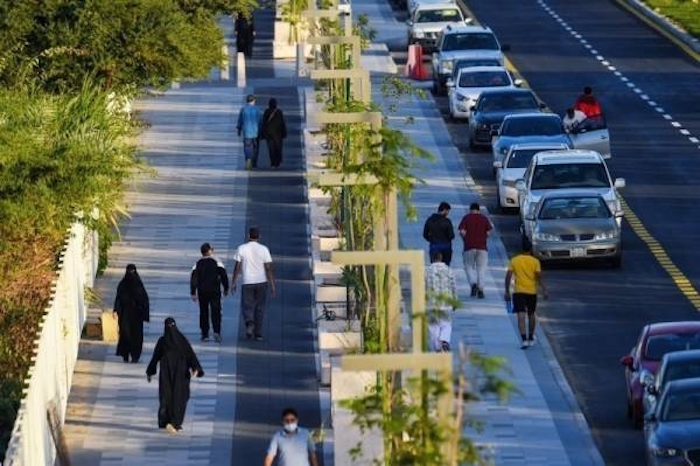
GASTAT set to launch fifth census in Kingdom's history ‘Saudi Census 2022’
RIYADH — The General Authority for Statistics (GASTAT) announced on Monday that it is preparing to launch the "Saudi Census 2022" program, which is an essential pillar of Saudi Arabia's Vision 2030.
The "Saudi Census 2022" program is the fifth census in the Kingdom's history, as the last general census of population and housing in the Kingdom was conducted in 2010, where the population at that time stood at 27,136,977 people.
During the past decade, Saudi Arabia has witnessed huge and rapid transformations in several fields, such as: technical, social, economic developments, lifestyles and consumption patterns, through which there were significant impacts that will show in the next census — "Saudi Census 2022".
The GASTAT has carried out a trial-run enumeration to prepare the implementation of general population and housing census 2022, in order to test the census form, and to test the tools that will be used in the general census such as: self-enumeration, filling out the questionnaire format electronically, then extract the lessons that been learned and evaluate the technical systems to be implemented in the Saudi Census 2022 program.
The trial-run enumeration was carried out on September 2021, covering seven cities around Saudi Arabia, including: Tabuk, AlUla, Makkah, Asir, Al-Diriyah, Riyadh, and the Eastern Province, as it included numbering of buildings and its components of housing units and families.
The trial-run enumeration has also included counting the population and individuals in labor gatherings and public housing to identify their demographic, social and economic characteristics.
It is noteworthy that during this pilot project, the authority dispensed with using paper forms and replaced them with tablets to collect data, in order to obtain accurate results.
This data will then be used to deduce and draw lessons learned and evaluate the technical systems that will be applied in the 2022 census.
In addition to the demographic distribution across Saudi Arabia, the statistical outputs of the census include: the income and living standards of the targeted people, educational status, and enabling data usage for policymakers, in order to guide future development projects and assist decision makers in making decisions based on reliable information that help to achieve the Kingdom’s Vision 2030 goals by developing public services such as education, health, public transportation, preparing urban plans for cities and to distribute budgets over projects and initiatives.
The executive plan for the Saudi census 2022 was prepared by the GASTAT after conducting a comprehensive study of the government agencies requirements that will benefit from the census results, as it has been built with the best international population census models and standards which operate in the G20 countries and the member countries of the Organization for Economic Cooperation and Development (OECD).
In the census plan, the GASTAT was distinguished by its use for the first time of modern technologies, such as using of satellite images to ensure a more comprehensive coverage of the Kingdom’s regions, identification of dwellings that are not registered in national addresses, developing the data collecting mechanism to include self-enumeration, which is a new way to collect data through the authority’s available portal to all individuals.
The authority noted that it is fully committed to the highest levels of privacy, confidentiality and protection for data, personal information and the names of the identities of those included in the census, as it indicated that it does not share it with any third party or disclose it to any competent authority.
It is noteworthy that the General Authority for Statistics is the only official statistical reference for statistical data and information in Saudi Arabia, as it also carries out all the statistical work and technical supervision of the statistical sector, which includes multiple systems of statistical centers and units and a number of private sector institutions.
Most countries of the world conduct a comprehensive population, housing and establishments census every 10 years with the aim of providing accurate detailed data on the population and their distribution according to their places of residence and social and economic characteristics, such as the educational level, scientific qualifications, economic status of individuals, the professions practiced by workers, the type of economic sector to which they belong, and the economic activity of the entities in which they work.
This accurate statistical data enables officials, planners and policy makers to prepare a comprehensive strategy that keeps pace with the urban renaissance development and fulfills the future needs of any expected population increase. It also contributes to setting development plans and providing more public services to the population, such as health and education services, transportation services and others.


























